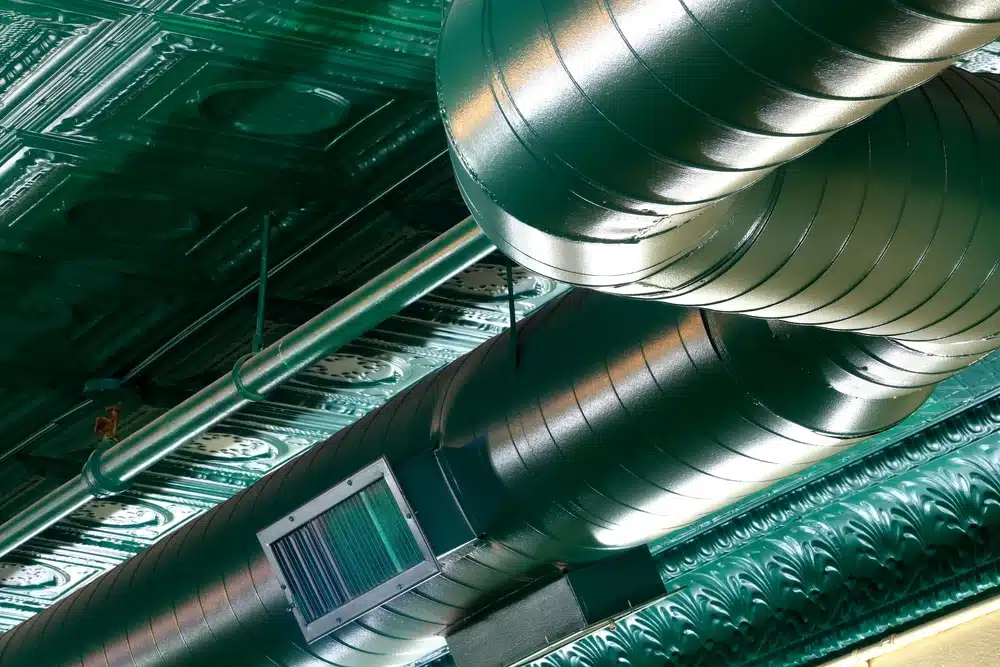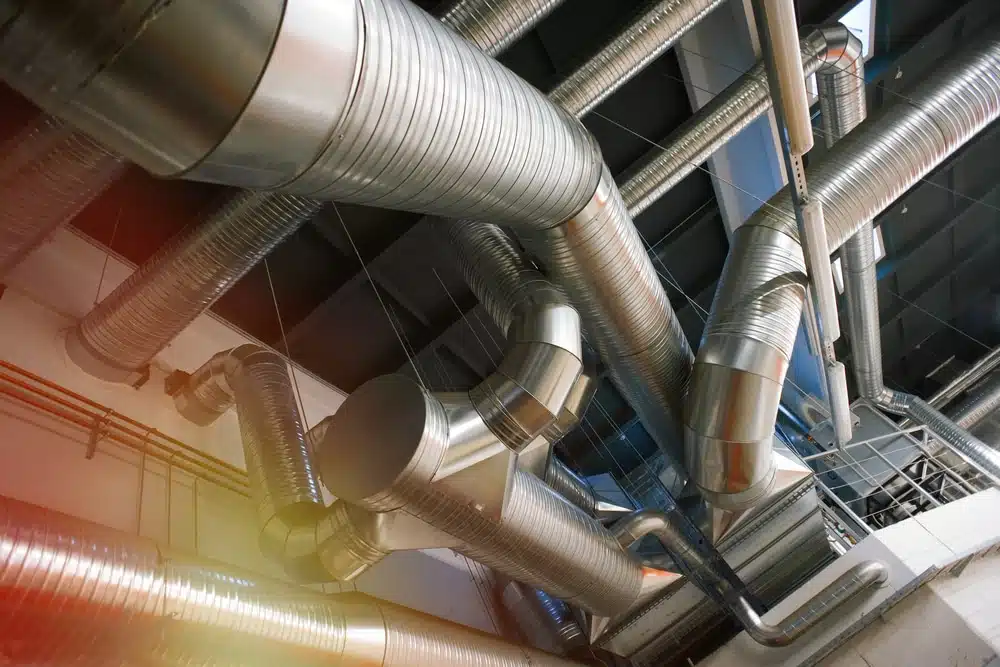Ventilation air grille diffuser
air vent manufacturer since 2002
 Vairtech
Vairtech  2025-07-08
2025-07-08
To prevent mould, fresh air should always be introduced into your dwelling daily, as it helps to regulate temperature and reduce condensation. Introducing fresh air can be as simple as having a ventilation routine, or installing extractors or PIV systems.
In this blog we will be answering the question ‘is round or square ducting better?’
Understanding which ducting is ideal for your home, business or building can be the defining factor in preventing mould effectively whilst providing adequate ventilation.
Vairtech is here to provide the answers you need whilst also supplying you with all the information you need to combat mould and have a well-ventilated home.
The ducting system is a series of interconnected hollow tubes dedicated to the movement of air, ducting pipes can come in different sizes and as previously mentioned, in different shapes, each of which has its benefit.
Ducting pipes can be as long or as short as required by the space it is occupying. Additionally, ducting can be created from different materials, as we will highlight below.
Ducting is used to facilitate the process of ventilation, ducting systems may vary, but generally are made from plastic or metal & made into the piping which intakes air from the room it is in & expels it outside.
The main purpose of ventilation is to introduce outdoor air into a dwelling, building or room being evenly distributed. Its general purpose is to allow “healthy” air for breathing & diluting pollutants that may be present in the dwelling, building or area.
Mould reproduces from tiny spores. The spores float through the air and deposit on the surfaces. Under adequate temperature, moisture, and nutrient conditions, the spores can form new mould colonies.
condensation is not the only cause of mould, it can occur from leaks in the structure of a building too. Ducting and ventilation can help prevent an environment necessary for mould to develop, along with a ventilation routine.
Mould can severely affect your immune and respiratory system, as the spores are easily breathable and not obvious to see through the human eye.
If you have found mould in your home, you need to assess if this is your landlord’s responsibility (for example it could be from a leaking roof that needs repairing). Or if the dampness is caused by improper ventilation.
Explaining Round & Square ducting

Round ducting has the highest airflow performance, this is due to a wider diameter increasing its free area. The lack of corners also decreases resistance within the pipe, which allows for higher airflow rates and higher rates of ventilation.
It is recommended for most applications where space is available for installation. Its main purposes are for long ducting runs, whole-house ventilation systems, HVAC systems, bathroom, toilet and utility room extract fan venting, or any occasion where high rates of extraction are required.
Round PVC ducting pipe can be used for venting exhaust odours and steam from cooker hoods, although flexible ducting may be easier to install in many instances.
Sizes are available from 100mm, 300mm, 500mm and 600mm diameters, with sizes between these dimensions also available. Both round and flat ducting have smooth inner surfaces to reduce air resistance and noise.
Square ducting (also known as flat channel ducting) is ideal when a low profile is required due to a lack of space. It can also be concealed and flush fit against ceilings and walls or within voids.
Please bear in mind that as a result of a lower free area, there is greater pressure created within a duct run. It is therefore essential that you check the manufacturer information for the fan you are planning to install within the run.
If the fan is extracting at a rate that is greater than the duct run can cope with, there is potential for the fan to overheat and burn out. This is both costly and unnecessary.
Flat channel plastic ducting is generally used for installations requiring low extraction rates such as bathrooms, toilets, and utility rooms. Sizes available from 110x54mm to 310x29mm.
Be mindful of where you place your ducting to understand what kind of ducting you need, and where its access doors will be, which are vital to maintaining the effectiveness of your ventilation by cleaning the ducting buildup at regular intervals.
It’s difficult to give a definitive answer to this question as the effectiveness of these ducting styles will be subjective to your needs, along with the location the ducting will be placed alongside the space required, and the space itself. (e.g Is it a home or an industrial space?)
To help you choose as to which you feel will be better for your situation, we have provided a table for each duct highlighting their pros & cons.
Pros & Cons of Round Ducting
|
Pros: |
Cons: |
|
High Airflow |
Difficult to conceal |
|
Less friction |
Poor results in low-pressure systems |
|
Lightweight |
More expensive than flat ducting |
|
Corrosion-resistant |
|
|
Better for high-pressure systems |
|
|
Designed for HVAC systems |
|
|
Pros |
Cons |
| Corrosion-resistant | |
|
|
Creates more noise within duct run |
|
Lightweight |
|
| Poor results within high-pressure systems | |
|
Easy to flush fit and conceal |
Increased air resistance |
|
Ideal for low-pressure |
|
Plastic and metal ducting

Plastic ducting is usually made from PVC. Plastic ducting is typically used as ventilation within domestic properties, principally within student flats and modernisations. It is preferred because of its lightness, its airtight properties & durability. It is usually used in rooms such as bathrooms and kitchens, and HVAC systems.
Our lightweight PVC-coated ductwork is manufactured from high-quality uPVC and is designed to create minimal air resistance, maximum airflow and minimal pressure loss.
We provide plastic ducting lengths, connectors, bends, brackets, and accessories such as reducers, attenuators and other fittings.
Plastic ducting has many advantages including
Metal ducting is ideal for ventilation systems set up in hotter environments, an example being a cooker hood. Metal ducting is also a popular choice for spaces and environments with air rich in certain compounds that could be hazardous or damaging to standard choices.
HVAC experts and engineers typically choose to rely on stainless steel for aggressive environments, where corrosion is highly likely.
We provide round ductwork fittings and accessories in a large range of diameters to suit all purposes including HVAC systems and extractor fans. Our metal ductwork is manufactured from high-quality galvanised Aluminium.
The benefits of metal ducting are as follows: